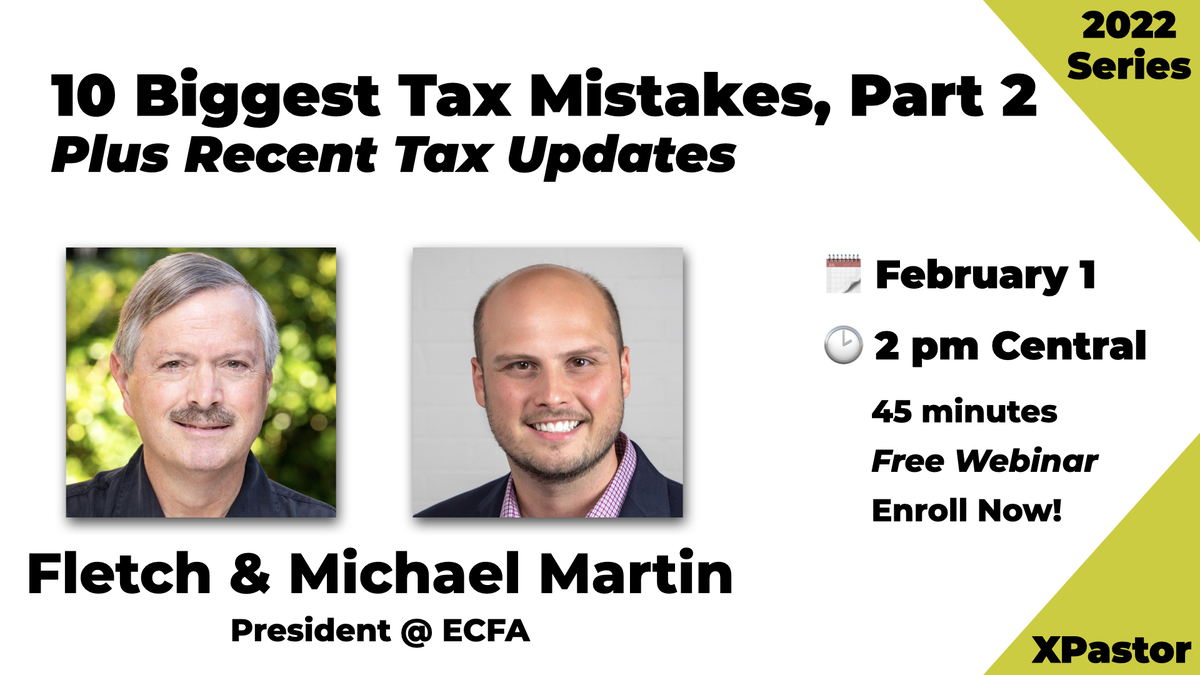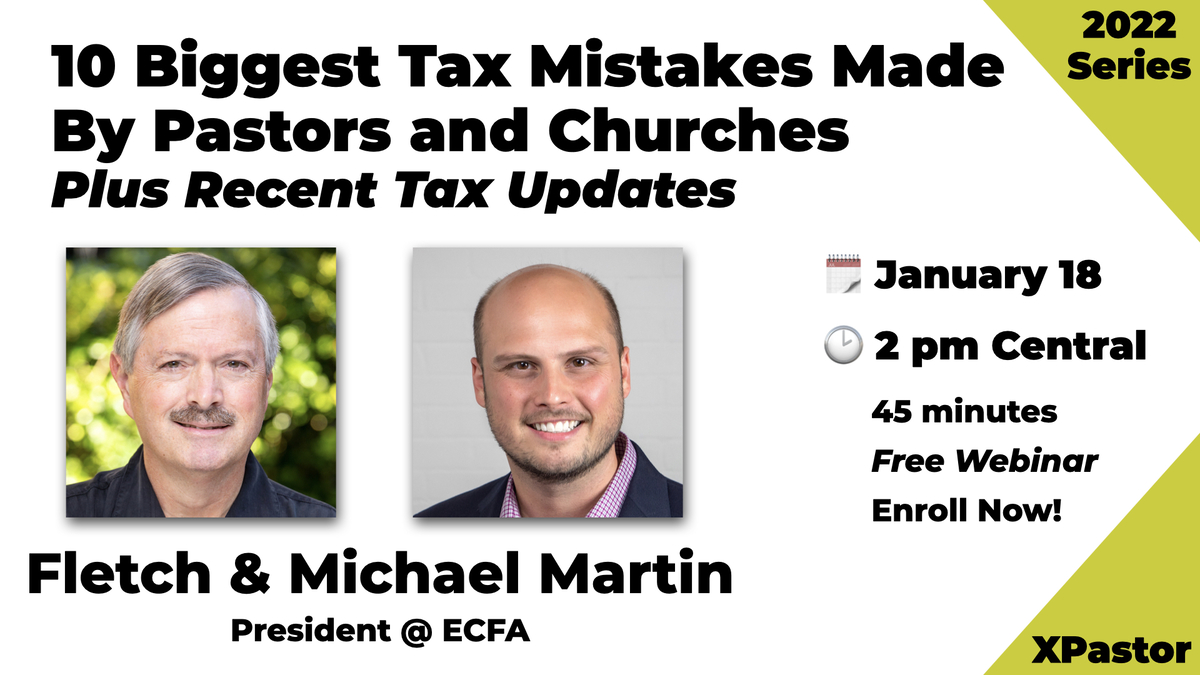Are the musicians your church pays to perform for worship services and other church events employees or independent contractors? Contrary to what some churches may believe, whether a musician paid by a church to perform for services and events is an employee or an independent contractor is a question of fact and not subject to a particular “bright line” test. An incorrect classification can result in significant negative financial consequences for both the church and the musician.
The most conservative approach is to treat all such musicians as employees. But classifying musicians as employees has consequences:
- As employees, the musicians are covered by the minimum wage and overtime rules of the Fair Labor Standards Act (FLSA) and similar state statutes;
- As employees, their wages are subject to income tax withholding and payroll tax withholding (i.e., FICA and Medicare) and the church must pay the employer’s share of the payroll tax; and
- Depending on the state, the church may be required to pay state unemployment tax, obtain Workers’ Compensation insurance coverage, or pay other state-mandated employment-related taxes.
The IRS, the Department of Labor, and the courts (including the U.S. Supreme Court) have all articulated tests for determining whether a worker is an employee or an independent contractor. A basic principle underlying these various tests is the degree to which the employing organization has “the right to control and direct” the worker in the performance of the services both as to the result and “the details and means by which that result is accomplished.” [1]
A Recent Case
A recent court case helps to illustrate this. In Lancaster Symphony Orchestra v. NLRB, 822 F.3d 563, (D.C. Cir. 2016), the court examined a number of factors that split as to whether the orchestra’s musicians were properly classified as employees or independent contractors. [2]
In examining factors that indicated an employment relationship, the court noted that:
- The orchestra exercised significant control “regulat[ing] virtually all aspects of the musicians’ performance.” The musicians’ conduct during rehearsals and performances was governed by the enforcement of a detailed code of conduct. The court observed that the conductor “exercise[d] virtually dictatorial authority over the manner in which the musicians play.” This control extended beyond when to come in to the techniques musicians used to play their instruments. The court discounted the fact that the musicians practiced on their own apart from orchestra rehearsals because “it is the conductor who directs how they perform.”
- Musical performance “is a part of the regular business of the [orchestra].”
- Although the agreement between the musicians and the orchestra specified that the musicians were “paid by the job,” their compensation was in fact increased whenever a rehearsal or performance exceeded an allotted time period, effectively meaning they were paid by the hour.
All of these factors were indicative of the musicians being employees of the orchestra. On the other side of the ledger, the court acknowledged that:
- “The occupation of musician requires a high degree of skill,” a fact that may be indicative of an independent contractor.
- The position at the orchestra was not a full-time occupation, as it involved at most 140 – 150 hours per year.
- The written agreement between the parties specifically stated that the relationship was an independent contractor relationship, a fact which the court found “suggest[ed] that both parties ‘believe’ that the orchestra’s musicians are independent contractors.”
In considering who provided the instruments and place of work, the court found that this factor was not dispositive because, although the musicians generally supplied their own instruments, “the orchestra supplie[d] music, stands, chairs, and the concert hall.”
As a final factor, the court considered “the extent of the [musician’s] entrepreneurial opportunities” or, stated differently, whether the musicians had “significant entrepreneurial opportunity for gain or loss.” The court noted that the musicians could not “contract to fill multiple chairs, nor [could] they assign or sell their place in the symphony, or hire someone to fill their seat at any given rehearsal or performance.”
Further, while a musician was expected to assist in finding a replacement if he or she was unable to perform, there was no indication that the musician could profit from finding a replacement. The fact that the musicians were free to decline a performance, work for other symphonies, and pursue other musical endeavors, such as teaching, was not sufficient to change the weight away from employee status.
What Does this Mean for Churches?
What relevant factors can we glean from Lancaster Symphony Orchestra that can aid church administrators in properly classifying church musicians as employees or independent contractors? Here are the important considerations:
- The more control the church exerts over the musician and the musician’s performance, the more likely it is that the musician should be classified as an employee. Types of activities that demonstrate employee-like control include:
- Selection of music by a member of the church staff.
- Prescribing of rehearsal and performance times by the church.
- Performance direction by a church staff member.
Where a musician collaborates in the selection of music and the development of the performance, the more this factor will bend toward independent contractor status.
- The more frequently a musician performs, the more likely it is that the musician should be classified as an employee. A musician who is scheduled to play one or more times a month is likely an employee. A musician who only performs for special services (e.g., at Easter or Christmas) may be an independent contractor. But be careful—if the musician is engaged to participate in multiple rehearsals leading up to a special performance, the rehearsal time contributes to the frequency analysis.
- The existence of a written agreement that states the nature of the relationship is given at least some weight in the analysis. Such an agreement is not dispositive because the courts, the IRS, the Department of Labor, and others will look to the way the parties conduct themselves to reach a final determination. But nonetheless, an agreement that states the parties’ intent is helpful.
Further, in the case where a musician is a professional and the church is one of many clients, it would be customary for the musician to have a performance contract with each client. In fact, the musician may even conduct his or her music performance business through a separate legal entity, a fact that would even further bolster a finding that the musician is an independent contractor. Note that the musicians in Lancaster Symphony Orchestra had an agreement, but that agreement alone did not make them independent contractors.
- Paying musicians a fixed fee for each rehearsal or performance, regardless of the length of the rehearsal or performance, is more likely to be indicative of an independent contractor relationship than an employment relationship. When workers are paid a fixed fee, they bear the risk of the relationship between the benefit received (the fee) and the work expended. This assumption of economic risk is indicative of an independent contractor.
- It may be unusual in the church context, but to the extent the musician is charged with not only supplying his or her own time and skills but also supplying other musicians, particularly if the musician is charged with paying those other musicians, it is more likely that the musician is an independent contractor. It would be helpful in this context if the musician conducts his or her business through a separate legal entity.
- The more skilled the musician, the greater the probability that he or she can be properly classified as an independent contractor. A musician with formal training and years of experience is more likely to demonstrate the requisite skill as contrasted with a high school student with limited performance experience.
To summarize, the determination of whether a musician is an employee or independent contractor is a fact-sensitive determination that must be made on an individual basis. Numerous factors must be considered, each having its own weight and often interrelating with other factors. “Getting it right” is an important goal because an incorrect classification can have significant financial penalties for both the church and the musician.
[1] Rev. Rul. 87-41, 1987 1 Cum. Bull. 296.
[2] The context of the case was whether the musicians were employees and could therefore join a union and collectively bargain. The court’s jurisdiction was limited to assessing whether the NLRB had made a fair determination, not reviewing the facts and reaching its own independent determination.










